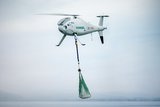GA-ASI delivers final RQ-1 Predator As
General Atomics Aeronautical Systems (GA-ASI) has delivered two RQ-1 Predator UAS to the Italian Air Force, the company announced on 22 December.
This marks the final deliveries of GA-ASI's Predator A product line.
The Italian Air Force uses the RQ-1 and MQ-9 Predator for ISR missions across Italy, over the Mediterranean, and in support of NATO operations.
Frank Pace, president, aircraft systems, GA-ASI, said: ‘With the delivery of these aircraft, GA-ASI completes over two decades of delivering Predator A capabilities to the US and allied countries.
‘Amassing over 2.1 million cumulative flight hours and featuring the highest mission capable rate of any aircraft in the air force's inventory, Predators will continue to keep warfighters safe by equipping them with unparalleled situational awareness for many years to come.’
Related Equipment in Defence Insight
More from Uncrewed Vehicles
-
Jammer resistant drone designs spark search for countermeasures
The Russia-Ukraine conflict has driven another stage of evolution for drones and the counter measures to defend against them.
-
![L3Harris launches Amorphous software for control of uncrewed platforms]()
L3Harris launches Amorphous software for control of uncrewed platforms
The new Amorphous software is a universal controller that would allow a single operator to control a swarm of “thousands” of uncrewed systems, from drones to underwater platforms.
-
ideaForge unveils new UAVs at Aero India 2025
India UAV supplier ideaForge has launched the Netra 5 and Switch V2 drones at Aero India 2025, boasting of enhanced endurance, AI-driven autonomy and improved operational capabilities.
-
![Shaping the future of defence: What 2025 holds for the global drone market]()
Shaping the future of defence: What 2025 holds for the global drone market
The UAV market is experiencing unprecedented growth, with innovations in technology and battlefield applications driving demand across military sectors. From the battlefields of Ukraine to NATO exercises and beyond, drones are transforming how wars are fought and supported.
-
![Maris-Tech confirms customers signing up for Jupiter Drones codec and AI-powered system]()
Maris-Tech confirms customers signing up for Jupiter Drones codec and AI-powered system
Launched at AUSA in October, the company’s multi-stream video codec is attempting to bring a new lease of life to drone technology through its AI accelerator.
-
![AUSA 2024: Quantum-Systems targets big 2025 with UAS developments]()
AUSA 2024: Quantum-Systems targets big 2025 with UAS developments
Quantum-Systems has been upgrading its UAS family, with new versions of the Vector, Reliant and Twister drones set for release throughout 2025.
























